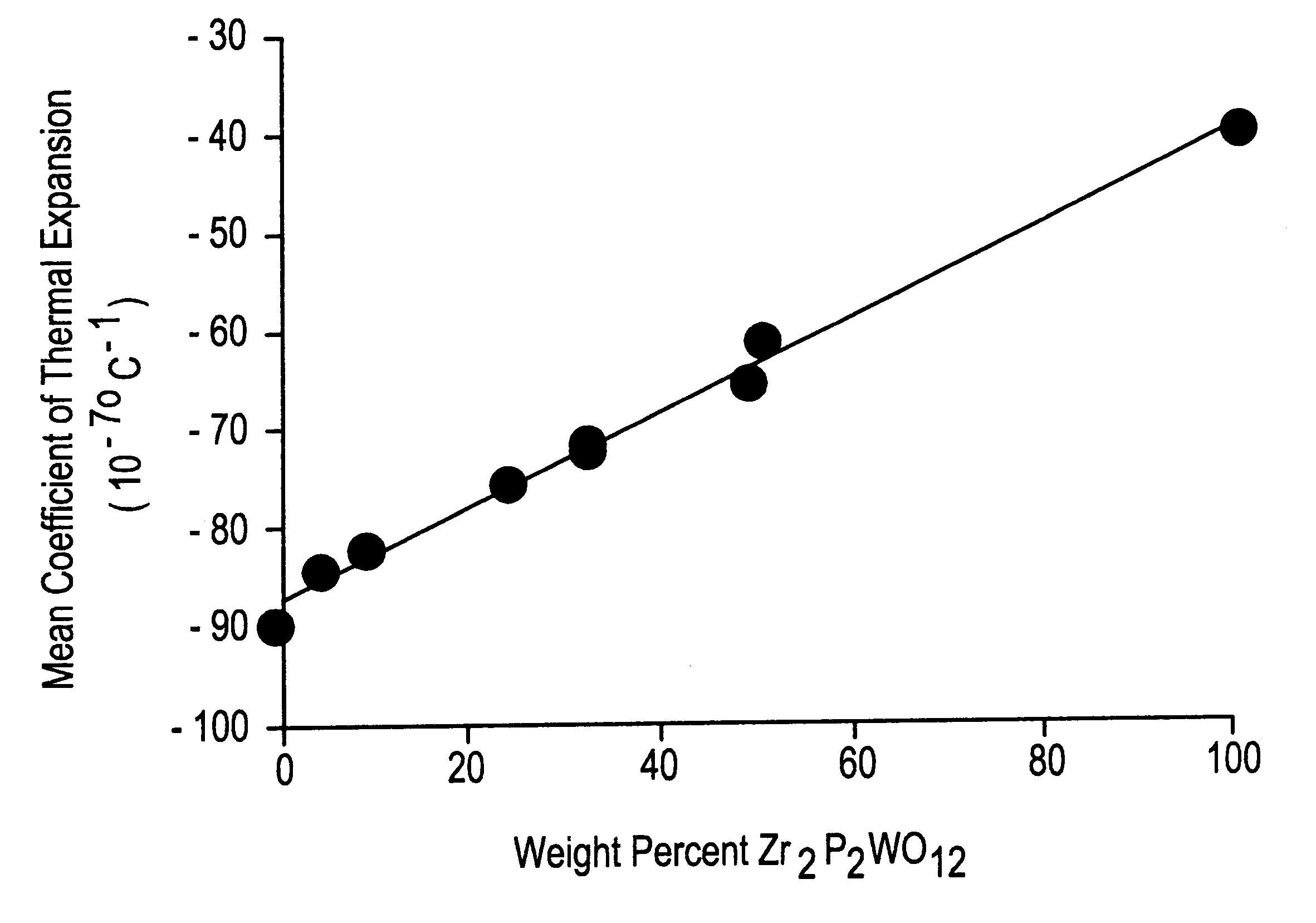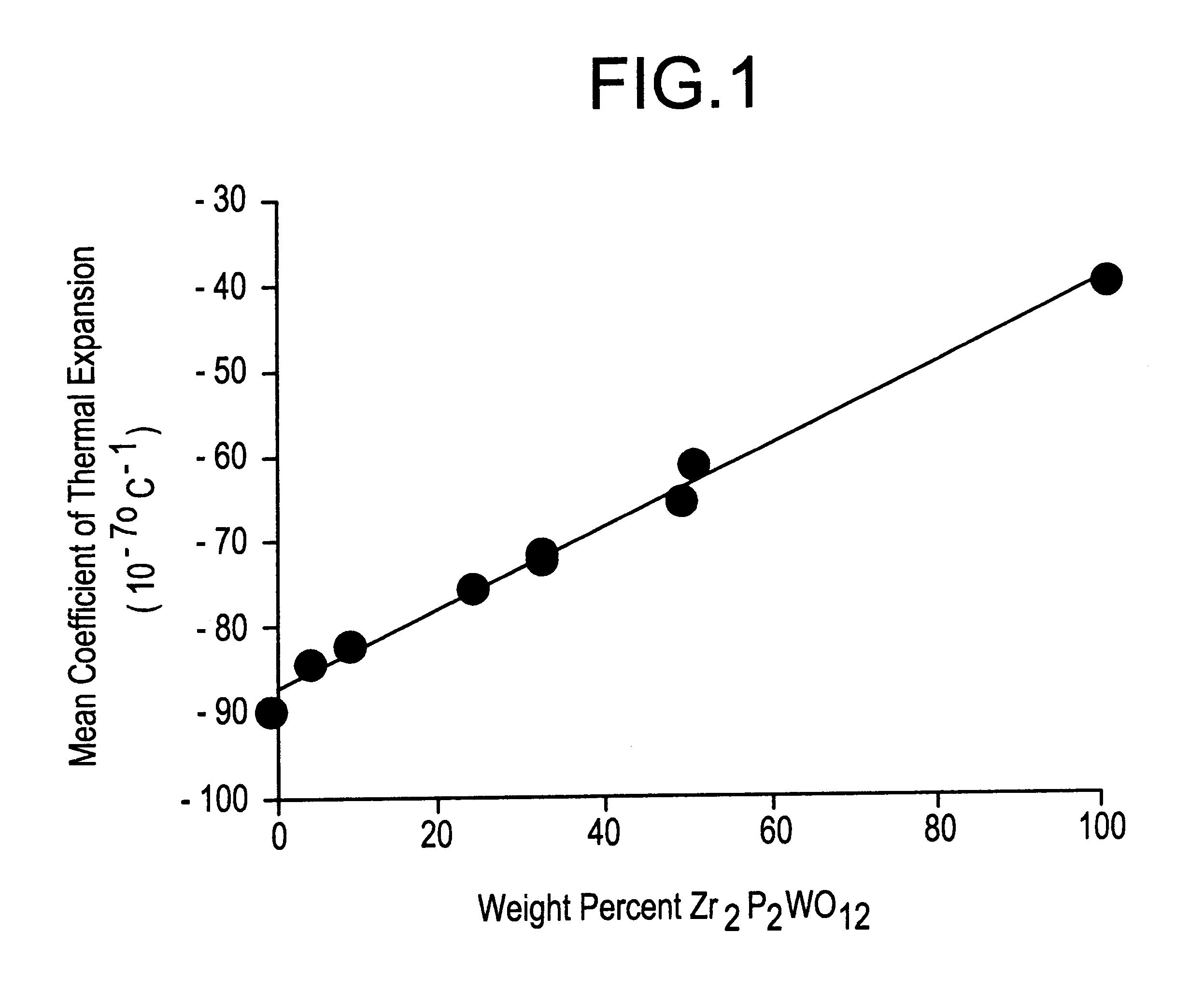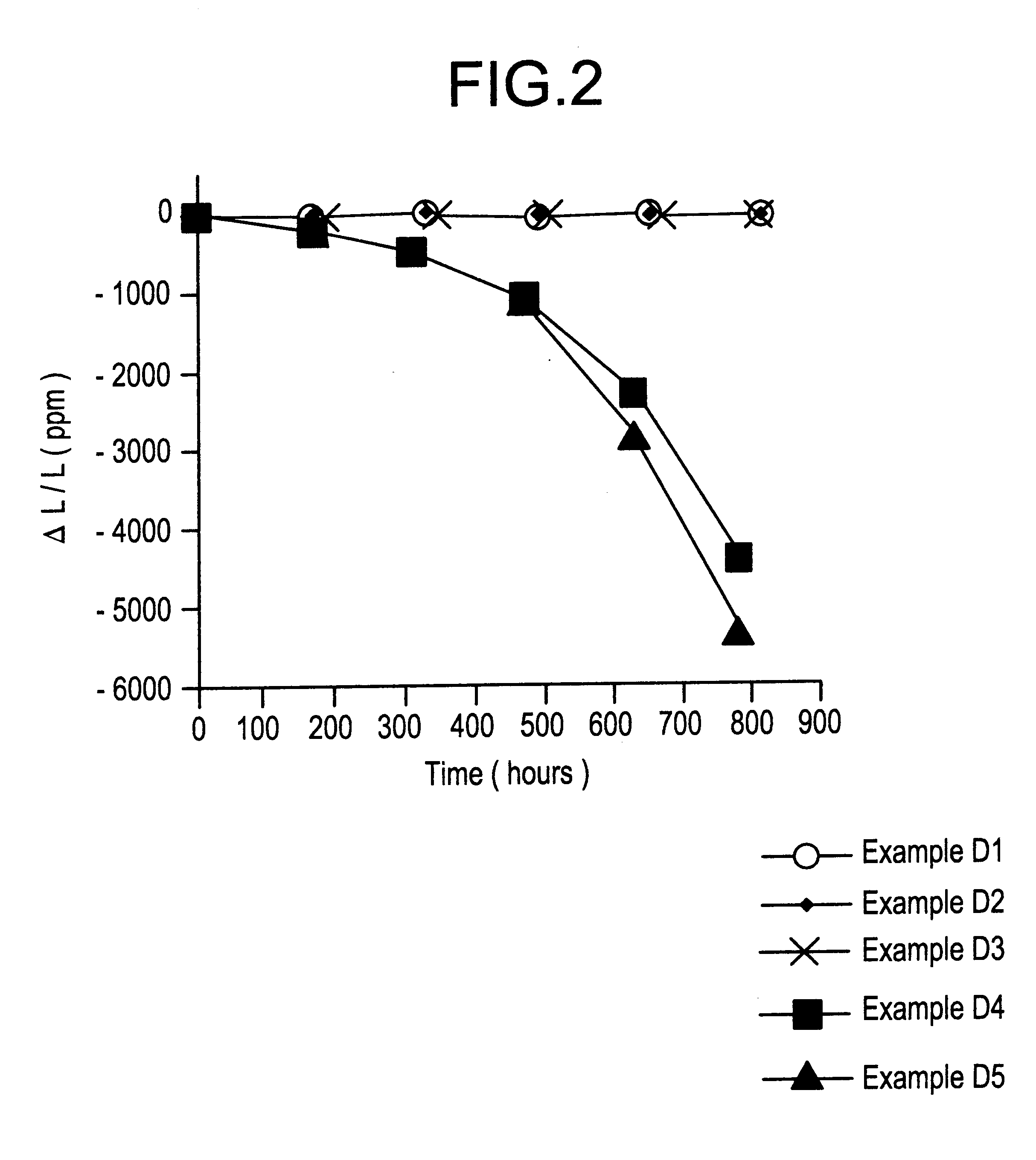Negative thermal expansion materials including method of preparation and uses therefor
- Summary
- Abstract
- Description
- Claims
- Application Information
AI Technical Summary
Benefits of technology
Problems solved by technology
Method used
Image
Examples
examples 1-18
were prepared by mixing together powders of zirconium oxide, tungsten oxide, and acid zirconium phosphate, Zr(HPO.sub.4).sub.2.0.93H.sub.2 O, in the proportions required to yield the compound Zr.sub.2 P.sub.2 WO.sub.12 after firing. Mixtures for Examples 2-18 also contained 1 weight percent addition of a metal oxide, or metal oxide forming source. Powders were mixed with a sufficient amount of isopropanol to form a slurry, and the slurry was milled in a vibratory mill for approximately sixteen hours using zirconium oxide milling media. The slurry was subsequently dried in a dish at about 85.degree. C., repulverized, and the powder pressed into 1.2 cm diameter, 0.4 cm thick pills, or 7.6 cm.times.1.3 cm.times.0.4 cm bars in a steel mold at a pressure of about 70 Mpa (10,000 pounds / inch.sup.2). The pills and bars were placed on coarse zirconium oxide sand in covered aluminum oxide setter boxes inside of an electrically heated furnace. Temperature of the furnace was raised at a rate of...
example 1
shows that, in the absence of a sintering additive, the Zr.sub.2 P.sub.2 WO.sub.12 ceramic was poorly densified, containing about 32 percent porosity. The mean coefficient of thermal expansion (CTE) from 25 to 50.degree. C. was -32.times.10.sup.-7.degree. C..sup.-1, and from 25 to 500.degree. C. was -30.times.10.sup.-7.degree. C..sup.-1. This specimen consisted entirely of the desired Zr.sub.2 P.sub.2 WO.sub.12 phase.
examples 2-4
demonstrate that the addition of only 1% of the carbonates of the alkali (Group IA) metals is highly effective in promoting densification of the Zr.sub.2 P.sub.2 WO.sub.12 ceramics. Samples contain essentially no open porosity, and total porosities are reduced to approximately 1-5%. Thermal expansions remain strongly negative at room temperature. XRD showed that these ceramic bodies contain mostly Zr.sub.2 P.sub.2 WO.sub.12 with minor amounts of LiZr.sub.2 P.sub.3 O.sub.12, NaZr.sub.2 P.sub.3 O.sub.12, and KZr.sub.2 P.sub.3 O.sub.12, in samples 2-4, respectively. These secondary phases are responsible for the somewhat less negative CTE from 25 to 500.degree. C. for Examples 2 and 3.
PUM
| Property | Measurement | Unit |
|---|---|---|
| Fraction | aaaaa | aaaaa |
| Fraction | aaaaa | aaaaa |
| Fraction | aaaaa | aaaaa |
Abstract
Description
Claims
Application Information
 Login to View More
Login to View More - R&D
- Intellectual Property
- Life Sciences
- Materials
- Tech Scout
- Unparalleled Data Quality
- Higher Quality Content
- 60% Fewer Hallucinations
Browse by: Latest US Patents, China's latest patents, Technical Efficacy Thesaurus, Application Domain, Technology Topic, Popular Technical Reports.
© 2025 PatSnap. All rights reserved.Legal|Privacy policy|Modern Slavery Act Transparency Statement|Sitemap|About US| Contact US: help@patsnap.com



